About Me
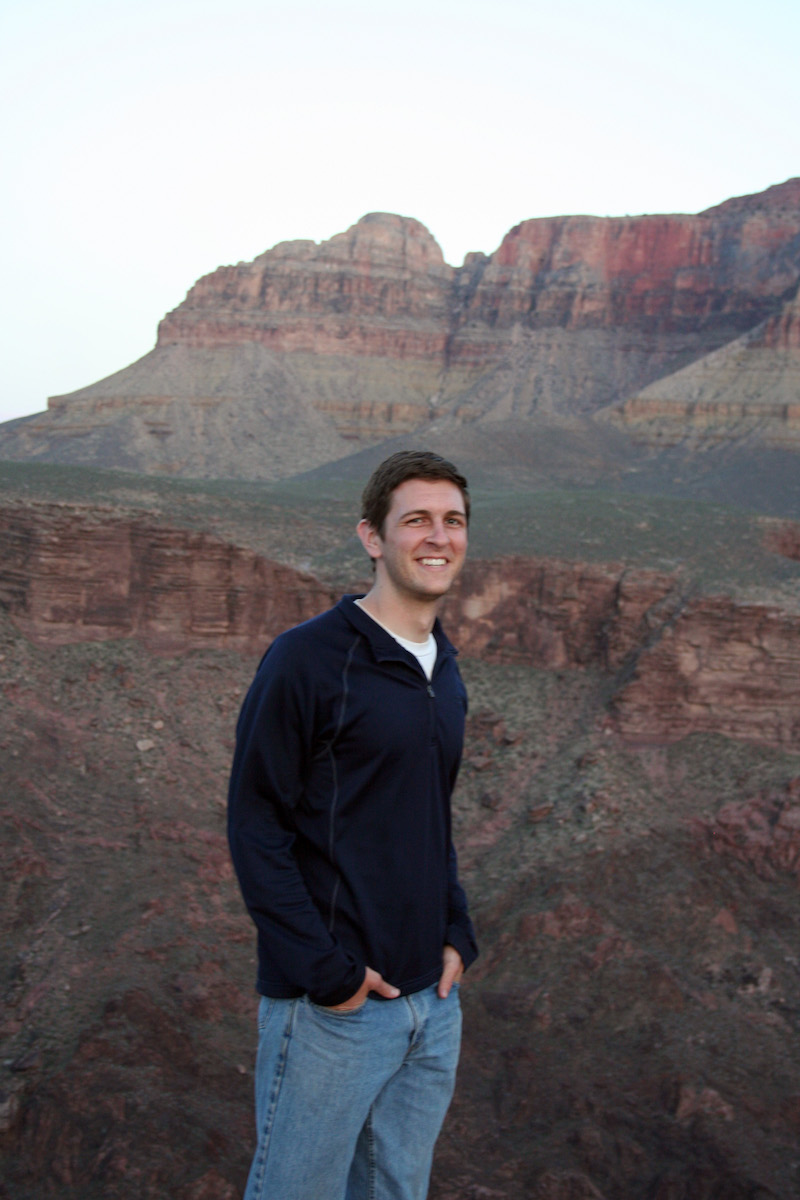
I am an assistant professor of astronomy at Texas A&M University, where I have been since 2022. Before that I did postdoctoral stints as a NASA Hubble Fellow
and Harlan J. Smith Fellow at the University of Texas at Austin from 2017-2022. I received my PhD in Astronomy & Astrophysics in 2017 from the University of
Arizona, where my advisor was Dr. Dan Marrone.
I am a multiwavelength observational astrophysicist, and my research interests are broadly related to the ways that galaxies form
(or don't form) new stars throughout the history of the Universe. I’m working on a number of topics related to the quenching of galaxies, trying to understand
the physical mechanisms that turn a star-forming galaxy into a quiescent one.
I grew up in Lincoln, Nebraska and went to college at Iowa State University - what can I say, I'm a big state school guy at heart! I originally wanted to be
an engineer, but decided pretty quickly that engineering was far too practical for me, so I decided to become an astrophysicist instead. When away from the
computer screen I'm a big cyclist, typically hitting about 3000 miles a year on two wheels by commuting and fun rides.
Research
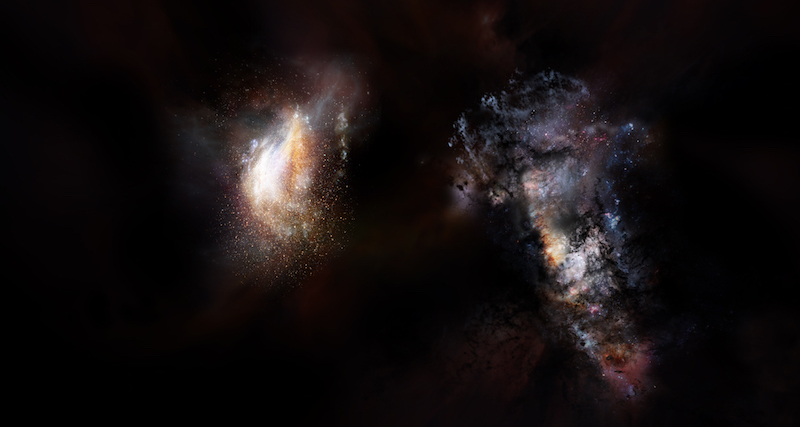
I'm broadly interested in the quenching of galaxies - the processes that prevent galaxies from forming new stars, and keep them from forming stars over long timescales.
I'm an expert in the use of radio/submillimeter interferometers like ALMA and the
VLA. I tend to go where interesting science leads, though, and I've led multiwavelength observing
programs from the radio to the X-Ray, including the Hubble and James Webb Space Telescopes.
You can read a little more about the main components of my research program below, get a copy of my CV, access
code and data from my work, or get a
list of my papers
from NASA/ADS.
Gravitational Lensing and Galactic Winds
Early Quiescent and Post-starburst Galaxies
Compact Galaxies and Structural Change
ISM Metal Enrichment
Galactic Winds, Gravitational Lensing, and the South Pole Telscope Survey

Much of my PhD thesis focused on studying a sample of very dusty, highly star-forming galaxies detected by the South Pole Telescope. Originally
built to observe the Cosmic Microwave Background, the SPT also detected many dusty galaxies that are by and large so bright that they're virtually guaranteed to be magnified by
a foreground galaxy through gravitational lensing. By virtue of their selection, this sample tends to lie at higher redshift than other samples observed with, e.g., Herschel or
SCUBA/SCUBA-2. We also have a complete sample with spectrosopic redshifts and lensing models, which now allows us to pick the "best" sources for any given science question. The SPT
sample serves as a very good benchmark sample of bright dusty galaxies spanning all the way to the Epoch of Reionization.
Recently, I've been using this sample of galaxies to detect and measure the structure of galactic winds in the first 1-2 billion years of the history of the universe. This is
completely new territory, and I'm really excited by it! We published the first detection in Science, the first time a molecular outflow has been spatially resolved in
the early universe. In follow-up work we expanded this to create the largest sample of high-redshift galaxies with detected outflows, and the only galaxies where their structure
has been spatially resolved in any substantive detail.
Selection of key and/or recent papers:
Spilker et al. 2022
Spilker et al. 2020b
Spilker et al. 2020a
Spilker et al. 2018 (Science). Press release here.
Marrone, Spilker, et al. 2018 (Nature). Press release here.
Spilker et al. 2016
Spilker et al. 2014
Quenched and Quenching Galaxies
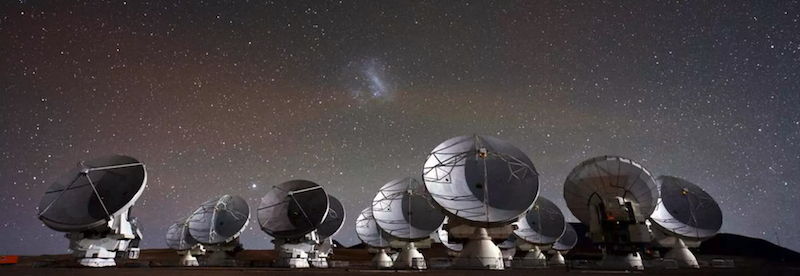
After a decade and thousands of hours of observations, we now have a pretty good idea of which properties are the most important for determining how much molecular
gas a star-forming galaxy contains - mostly redshift, star formation rate, and stellar mass. We know a lot less, though, about the gas contents in galaxies that
aren't forming stars - they're very faint! I'm working to understand what the quenching process(es) do to galaxies' gas contents as they occur, using two complementary
samples at z ~ 0.7, when the universe was about half its current age.
First, I and collaborators have used ALMA to observe the molecular gas in several samples of quiescent galaxies out to about redshift z = 2. In several studies over the
past few years, we found that these quiescent galaxies have even less gas
than you would have expected - they don't follow the scaling relations for star-forming galaxies that took thousands of hours of observation to determine! Reassuringly,
the galaxies are fully consistent with evolving into the gas-poor giant elliptical galaxies we see today.
Second, I'm working with a group of collaborators to do a similar study on post-starburst galaxies at similar redshifts - these are galaxies that are much younger than the older
samples we've observed, having stopped forming stars within the last few hundred million years. Called the SQuIGGLE survey, we're
working to tease out the connection between gas and quenching as it occurs. So far we've seen that these galaxies tend to have much more gas than we expected.
Selection of key and/or recent papers:
Suess et al. 2022 (SQuIGGLE Survey overview paper)
Setton et al. 2022 (student-led paper)
Bezanson et al. 2022
Spilker et al. 2018
Suess et al. 2017 (student-led paper)
Compact Galaxies: Structural Change and Quenching
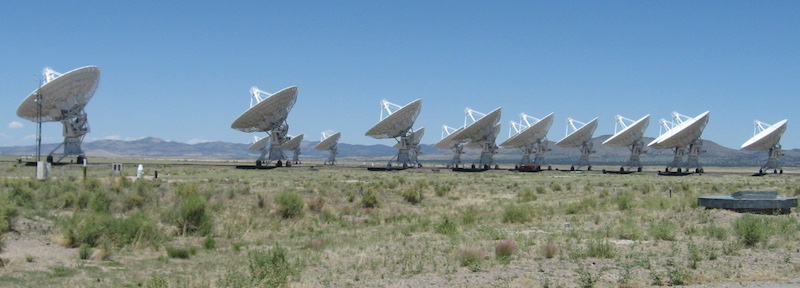
One of the neatest things about early passive galaxies is that they were tiny compared to passive giant elliptical galaxies today. Early quiescent galaxies were
about 100 times more dense than today's quiescent galaxies, and it's not clear how they formed. One possible population of progenitors are compact star-forming
galaxies. Essentially these galaxies have the same structure as early passive galaxies, but are still forming stars. So, all you have to do is get them to stop forming stars (somehow...!)
and they'll look very similar to early quiescent galaxies.
To get at this question from an independent angle, I observed a few of these compact star-forming galaxies using the VLA to try to measure the amount of molecular gas they contain.
If they're really going to become quiescent, they better not be gas-rich, or they'd continue to form stars over longer timescales and become too massive! I and my collaborators
found that the three galaxies we observed are the most gas-poor galaxies ever seen at this redshift, very consistent with the idea that they'll quench on very short timescales. Now
having identified this population of galaxies in transition, we're going back and re-observing one galaxy at much higher spatial resolution, using these objects as testbeds for
theoretical models of how galaxies quench.
Selection of key and/or recent papers:
Spilker et al. 2019
Spilker et al. 2016
ISM Metal Enrichment: Better Metallicities in the Far-Infrared

There are many different ways to measure the metallicity of galaxies, most of which revolve around observing the brightest lines in visible light. Unfortunately these
methods often disagree with each other by up to a factor of 5! This is mostly due to assumptions that the methods have to make about the temperature of the gas and the
effects of dust along the line of sight. This project aims to find out if we can do better by using lines in the far-infrared, which are less susceptible to both dust
and temperature effects. I'm leading a program to use new and archival data from SOFIA and Herschel to measure the most metallicity-sensitive fine-structure lines in a
few nearby low-metallicity dwarf galaxies.
The initial results, from undergraduate-led work, are very promising! We found that the metallicity for a nearby dwarf galaxy agreed with previous determinations to better
than 20%! This means that this method could be used for galaxies in the early universe, which tend to be metal-poor like modern-day dwarf galaxies. This has big
implications for future far-infrared space missions like SPICA or the Origins Space Telescope, which can measure the necessary lines out to high redshift.
Tools/Data

I'm a strong believer in making all code, data, and ancillary or derived data products publicly available (within reason...). I have made the most important data products
and tables from all of my papers on my github page.
Most of the collaborations I am leading and involved in also make data products available:
SPT SMG, the South Pole Telescope Submillimeter Galaxies Team
JWST TEMPLATES, our JWST Early Release Science program
SQuIGGLE Survey of Intermediate-Redshift Post-Starbursts
If there's something you want that's not linked here, just let me know.
Collaborations
In addition to some smaller groups of people, I've been fortunate enough to be part of several larger collaborations of astronomers following up interesting sources from
large photometric and spectroscopic surveys.
SPTSMG: South Pole Telescope Submillimeter Galaxy Collaboration
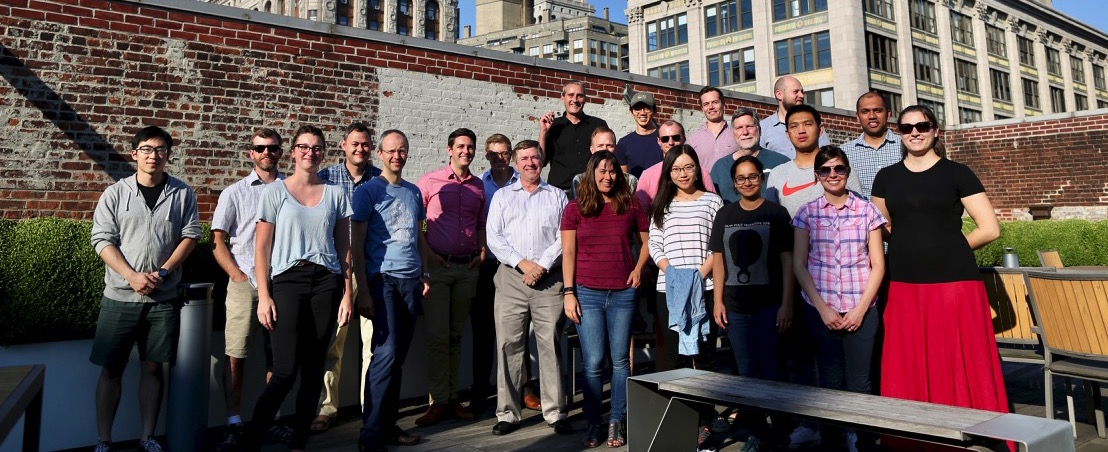
Group meeting at the CCA in New York City, 2018.
Team website
Collaboration studying dusty star-forming galaxies at z = 1 - 7 discovered by the South Pole Telescope. I have a leadership role in this collaboration, and also
serve as the "lensing guru" overseeing many of our efforts to model and account for the gravitationally lensed nature of the sources.
SQUIGGLE: Studying Quenching in Galaxies: Gas, anguLar momentum, and Evolution
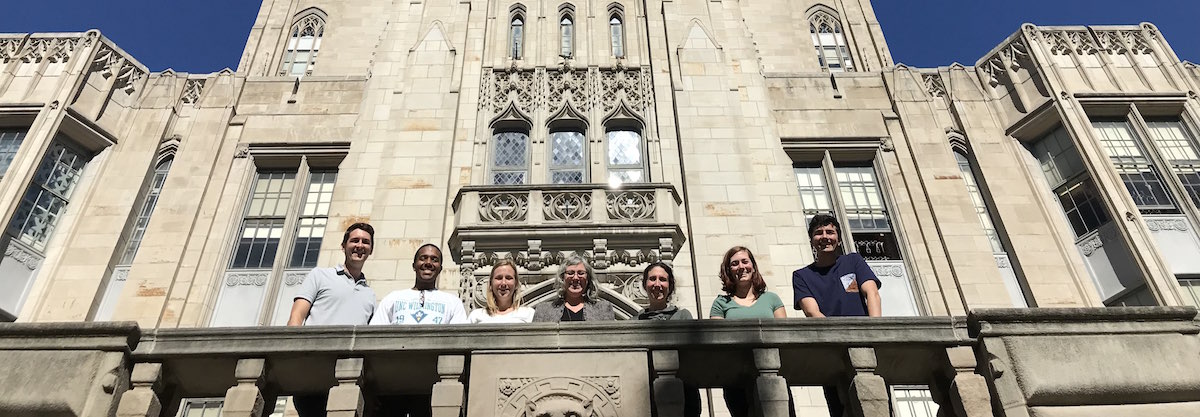
Group meeting at U. Pittsburgh, 2018. From left to right: Me, Khalil Hall-Hooper, Mariska Kriek, Rachel Bezanson, Jenny Greene, Wren Suess, David Setton
Team website
We're studying a sample of massive post-starburst galaxies at z ~ 0.7 selected to have strong Balmer breaks and blue slopes redward of the break (dominated by
A-type stars). I started out in this collaboration as the "token ALMA expert," and we've been finding a lot of really interesting stuff that I can't share
publically just yet!
TEMPLATES: Targeting Extremely Magnified Panchromatic Lensed Arcs and Their Extended Star formation
Team website
TEMPLATES is an Early Release Science program using the James Webb Space Telescope targeting four
gravitationally lensed galaxies at z = 1 - 4, two of which are dominated by UV-bright unobscured star formation and two dominated by dusty obscured
star formation. We'll have high-resolution maps of all the most common indicators of star formation, and will be able to compare and contrast them on spatial scales
that not even JWST can access without the aid of lensing. I'll be leading the lensing analysis for the JWST data when it arrives after launch.
LEGA-C: Large Early Galaxy Astrophysical Census
Team website
LEGA-C is a large ESO public spectroscopic survey using the VIMOS instrument at the VLT to obtain ultra-deep (20 hour integrations!) optical spectra for thousands
of massive galaxies at z = 0.6 - 1 in the COSMOS field. The optical spectra provide detailed views into the star formation histories of the target galaxies. I
serve as the ALMA expert for this collaboration.
Contact
I can be reached by email at jspilker [at] tamu [dot] edu.
My office at TAMU is in the Mitchell Institute Building (MIST), room M324. If you're visiting,
the Mitchell building (MIST) is the round building attached to the main physics building (MPHY) immediately to the south (a.k.a. "Aggie west"). It's the building
with the giant Foucalt Pendulum in the main lobby; if you don't see it then you're in the wrong building!
My mailing address is
Justin Spilker
Department of Physics and Astronomy
Texas A&M University
4242 TAMU
College Station, TX 77843-4242
Elements
Text
This is bold and this is strong. This is italic and this is emphasized.
This is superscript text and this is subscript text.
This is underlined and this is code: for (;;) { ... }. Finally, this is a link.
Heading Level 2
Heading Level 3
Heading Level 4
Heading Level 5
Heading Level 6
Blockquote
Fringilla nisl. Donec accumsan interdum nisi, quis tincidunt felis sagittis eget tempus euismod. Vestibulum ante ipsum primis in faucibus vestibulum. Blandit adipiscing eu felis iaculis volutpat ac adipiscing accumsan faucibus. Vestibulum ante ipsum primis in faucibus lorem ipsum dolor sit amet nullam adipiscing eu felis.
Preformatted
i = 0;
while (!deck.isInOrder()) {
print 'Iteration ' + i;
deck.shuffle();
i++;
}
print 'It took ' + i + ' iterations to sort the deck.';
Lists
Unordered
- Dolor pulvinar etiam.
- Sagittis adipiscing.
- Felis enim feugiat.
Alternate
- Dolor pulvinar etiam.
- Sagittis adipiscing.
- Felis enim feugiat.
Ordered
- Dolor pulvinar etiam.
- Etiam vel felis viverra.
- Felis enim feugiat.
- Dolor pulvinar etiam.
- Etiam vel felis lorem.
- Felis enim et feugiat.
Icons
Actions
Table
Default
| Name |
Description |
Price |
| Item One |
Ante turpis integer aliquet porttitor. |
29.99 |
| Item Two |
Vis ac commodo adipiscing arcu aliquet. |
19.99 |
| Item Three |
Morbi faucibus arcu accumsan lorem. |
29.99 |
| Item Four |
Vitae integer tempus condimentum. |
19.99 |
| Item Five |
Ante turpis integer aliquet porttitor. |
29.99 |
|
100.00 |
Alternate
| Name |
Description |
Price |
| Item One |
Ante turpis integer aliquet porttitor. |
29.99 |
| Item Two |
Vis ac commodo adipiscing arcu aliquet. |
19.99 |
| Item Three |
Morbi faucibus arcu accumsan lorem. |
29.99 |
| Item Four |
Vitae integer tempus condimentum. |
19.99 |
| Item Five |
Ante turpis integer aliquet porttitor. |
29.99 |
|
100.00 |








